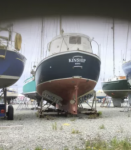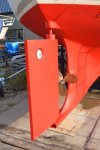GRAPHICSGEEZER
New member
Hello-- not sure if this is the right forum. I have a chance to buy a Colvic 28. The owner says he tends not to use it without the motor though the sails are reasonably good. Just wondering, as I'm not familiar with motor sailers, if that's the usual practice. The owner said the propeller is pretty big and would be a significant drag if the motor wasn't providing power. Picture attached shows the size of the prop. Sorry it's so small.




